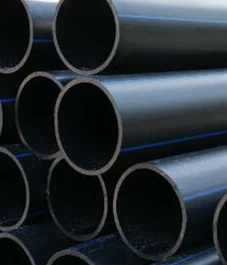Nov . 11, 2024 04:44 Back to list
Exploring Applications and Benefits of Rigid PVC Rods in Various Industries
Understanding PVC Rigid Rods Versatility and Applications
Polyvinyl chloride (PVC) is one of the most widely used synthetic plastic polymers in the world. Its versatility has allowed it to find application in a variety of industries, from construction to medical devices. Among the many forms of PVC available, rigid rods made from PVC are particularly noteworthy due to their strength, durability, and adaptability to different applications. In this article, we will delve into the features, benefits, and varied applications of PVC rigid rods, highlighting why they are an essential material in numerous sectors.
What are PVC Rigid Rods?
PVC rigid rods are solid cylindrical shapes made from polyvinyl chloride resin. Unlike flexible PVC, rigid PVC is characterized by its high tensile strength and resistance to impact, making it exceptionally sturdy and durable. These rods can be manufactured in various diameters and lengths, which allows for customization according to specific project requirements. Additionally, they can be produced in an array of colors, enabling visual distinction and branding opportunities.
Properties of PVC Rigid Rods
The unique properties of PVC rigid rods contribute significantly to their broad appeal. Some of their key properties include
1. Durability PVC rigid rods exhibit excellent resistance to chemicals, moisture, and UV rays, which means they can withstand harsh environmental conditions without degrading.
2. Lightweight Compared to metals, PVC is considerably lighter. This feature makes it easier to handle and install, reducing labor costs for transportation and installation.
3. Electrical Insulation PVC is a poor conductor of electricity, making these rods suitable for applications where electrical insulation is essential.
4. Low Maintenance Due to their resistance to corrosion and pollution, PVC rigid rods require minimal maintenance and have a long lifespan.
5. Cost-Effectiveness Compared to alternative materials such as metal or fiberglass, PVC rigid rods can be a more economical choice, not only in terms of initial cost but also regarding longevity and maintenance expenses.
pvc rigid rod

Applications of PVC Rigid Rods
The versatility of PVC rigid rods allows them to be used in a plethora of applications across various industries
1. Construction In the construction industry, PVC rigid rods serve as reinforcement in wall structures and can be utilized in scaffolding systems. Their resistance to corrosion makes them an ideal choice for outdoor applications.
2. Manufacturing PVC rods are frequently used as components in various machinery and equipment. They are often found in manufacturing settings as spacers, guides, and supports due to their structural integrity.
3. Home Improvement DIY enthusiasts often use PVC rigid rods in home improvement projects. They can be used to create custom shelves, curtain rods, and even as part of furniture designs.
4. Medical Devices Given their ability to be sterilized and resistant to chemicals, PVC rigid rods are employed in the production of medical devices and laboratory equipment. They often serve as supports in medical applications or as parts in diagnostic tools.
5. Automotive In the automotive industry, PVC rigid rods can be found in various applications, including as structural components and in the assembly of certain vehicle parts due to their lightweight and durable nature.
6. Crafts and Hobbies For hobbyists and crafters, PVC rods provide a reliable option for model building and crafting projects. Their ease of cutting and shaping makes them a favorite in many creative applications.
Conclusion
PVC rigid rods are an invaluable material that combine durability, versatility, and cost-effectiveness, catering to a wide spectrum of applications across different industries. Whether it is in construction, manufacturing, or even in creative hobbies, these rods play a vital role in ensuring structural integrity and reliability. As technological advancements continue to evolve, the applications and innovations surrounding PVC rigid rods will undoubtedly expand, further cementing their place as a quintessential material in the modern world. The future looks bright for PVC in its various forms, offering promising solutions for a myriad of challenges in both existing and emerging industries.
-
High-Quality PPR Pipes and Fittings Durable ERA PPR & PVC PPR Solutions
NewsJul.08,2025
-
Black HDPE Cutting Board - Durable, Non-Porous & Food Safe HDPE Plastic Cutting Board
NewsJul.08,2025
-
High-Quality CPVC Panel Durable HDPE & PVC Panels Supplier
NewsJul.08,2025
-
Double PE Welding Rod Supplier - High Strength, Durable & Versatile Welding Solutions
NewsJul.07,2025
-
High-Quality PVC-O Pipe Supplier Durable 75mm PVC Pipe & Connections Leading PVC Pipe Company
NewsJul.07,2025
-
HDPE Drainage Pipe Supplier – Durable & Corrosion-Resistant Solutions
NewsJul.06,2025

